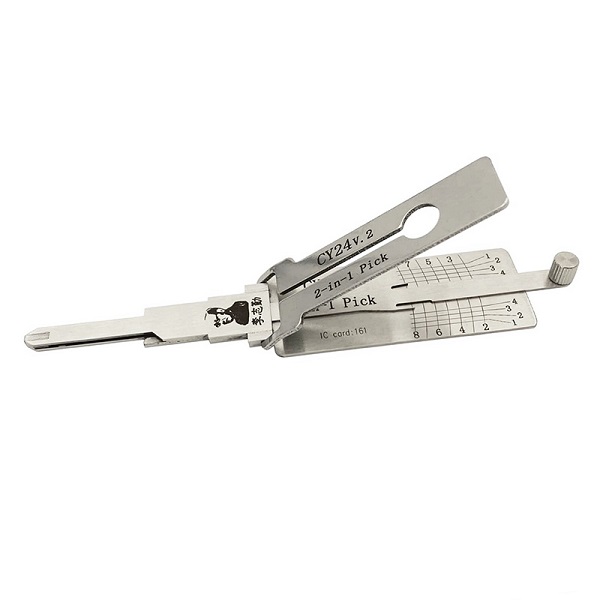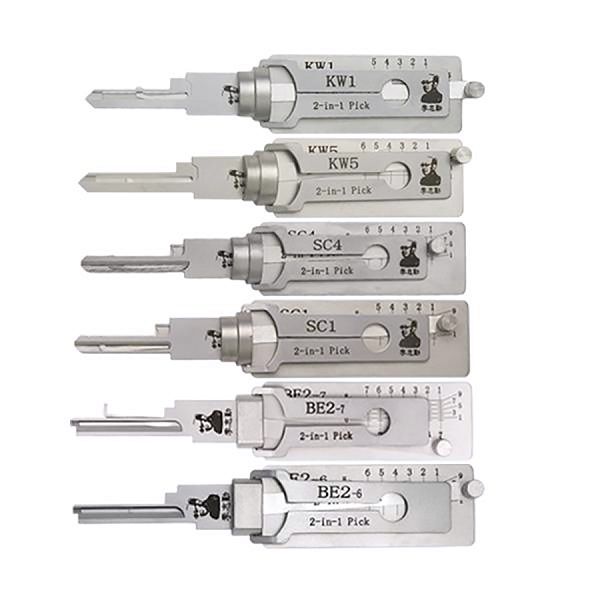Lishi Lock Pick Guide: Mistakes You Need to Avoid When Using it
2025-10-29 14:13
Mastering the Lishi lock pick requires patience and proper technique, making it crucial for beginners to understand common pitfalls. Whether you choose to Buy Lishi Lock Pick Set for professional locksmithing or personal practice, avoiding fundamental errors will significantly enhance your success rate and prevent damaging your tools.
1.Applying Excessive Tension
One of the most frequent errors when using Lishi picks is applying too much tension. The Lishi tool is designed to work with minimal pressure, allowing the internal components to move freely and indicate the correct binding order. When you use excessive force with the tension wrench, you risk oversetting pins, damaging the lock mechanism, and breaking your delicate picking tool. The correct technique involves using just enough tension to create a slight bind in the pins while maintaining the ability to feel subtle feedback through the pick. Remember that the Lishi is a precision instrument, not a brute force tool, and requires a gentle touch to decode and manipulate the lock properly.

2.Misinterpreting Visual and Tactile Feedback
Lishi picks provide both visual and tactile feedback through their indicator and pick tip, but beginners often misinterpret these crucial signals. The graduated scale shows the depth of each pin, but rushing through the reading process or misreading the measurements can lead to incorrect decoding. Similarly, failing to distinguish between a set pin and a overset pin through tactile sensation can leave you stuck with a lock that won't open. Developing this interpretation skill requires practice and patience—move systematically through each pin position, double-check your readings, and pay close attention to the subtle vibrations and movements transmitted through the tool. Proper interpretation is the cornerstone of successful Lishi operation.
3.Choosing the Wrong Pick for the Lock Type
Lishi manufactures specific picks for different lock brands and configurations, and using an incompatible tool is a guaranteed path to failure and potential damage. Attempting to use a SC1 Lishi pick on a Kwikset lock, for example, will not yield results and may harm both the pick and the lock cylinder. Before purchasing or using any Lishi tool, always verify that it matches your target lock's manufacturer, keyway, and pin configuration. Research the lock specifications thoroughly and ensure your Lishi pick is designed for that particular application. Investing in the correct tool from the beginning saves time, frustration, and replacement costs while ensuring optimal performance.

4.Rushing the Learning Process
Many enthusiasts expect immediate results with Lishi picks and become discouraged when they cannot open locks quickly. This impatience leads to sloppy technique, missed feedback, and ultimately, failure. Lishi picking requires developing muscle memory and analytical skills that only come with dedicated practice. Start with simple locks and gradually progress to more challenging ones, spending time to understand why certain techniques work while others don't. Regular, focused practice sessions are far more valuable than sporadic, frantic attempts. Document your progress, analyze your mistakes, and celebrate small improvements—this methodical approach builds the foundational skills necessary for consistent success.
5.Neglecting Proper Tool Maintenance
Lishi picks are precision instruments with delicate components that require regular care and maintenance. Failing to clean your tools after use, storing them improperly, or continuing to use damaged picks can severely impact their performance and accuracy. Dirt, dust, and debris accumulated in the indicator mechanism can cause false readings, while a bent pick tip will provide inaccurate feedback. Always store your Lishi picks in protective cases, clean them regularly with appropriate solvents, and inspect them for damage before each use. A well-maintained tool not only performs better but also lasts significantly longer, protecting your investment and ensuring reliable performance when you need it most.
Avoiding these common mistakes will dramatically improve your Lishi lock picking experience and success rate. Remember that proficiency comes through patient practice, proper technique, and using the right tools for the job. While you might be tempted to look for a Cheap Lishi Lock Pick Set, investing in quality tools and education ultimately provides better value and performance. Whether you're pursuing locksmithing as a profession or lock sport as a hobby, mastering these fundamentals will serve you well throughout your journey.

 Like Us on Facebook to enjoy 5% discount
Like Us on Facebook to enjoy 5% discount